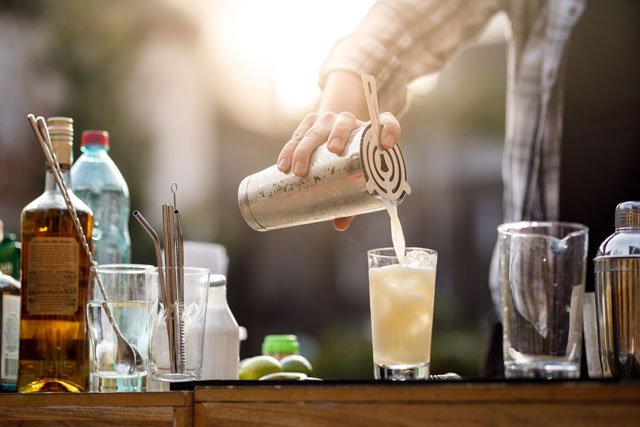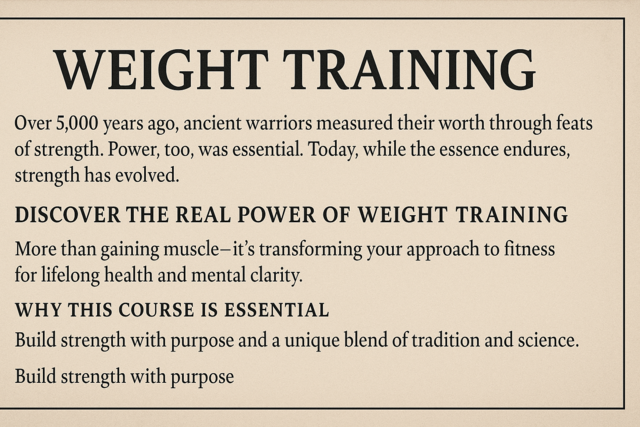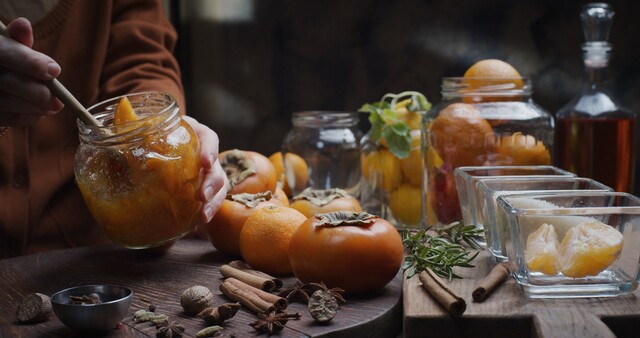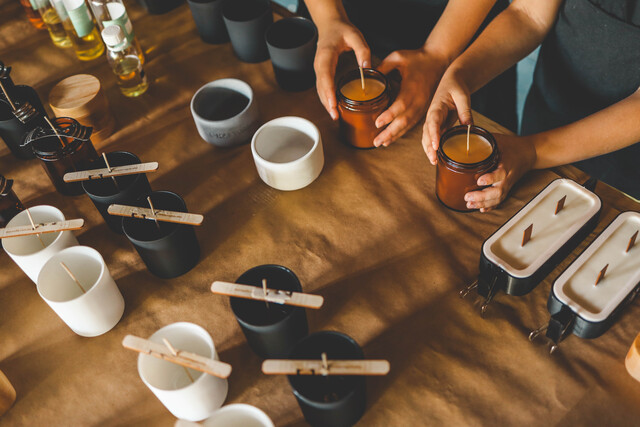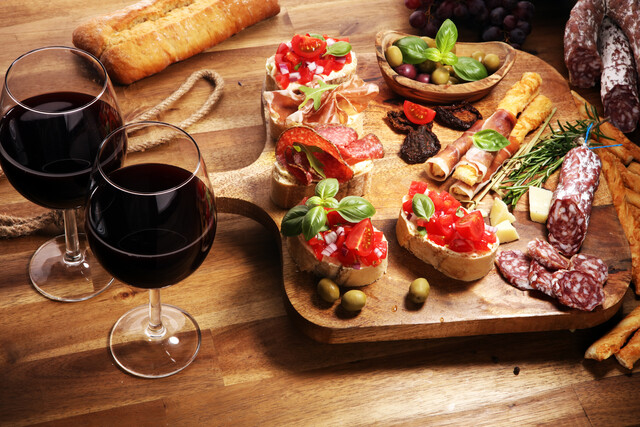Using Buttercream Icing and Royal Icing for Cake Decorating
It's only appropriate when talking about icings to begin with one of the most versatile, flavorful varieties - buttercream icing.
It's smooth, it's creamy, and it keeps its soft texture - making it easy to cut through. And the number of purposes you can put it to are virtually limitless. You can pipe it, at various consistencies, through a pastry bag to make figures, flowers, borders, letters, and much more. You can also use it to transfer a design onto a frosted cake. And this is just the tip of the iceberg.
The Three Basic Buttercreams
When it comes to cake baking and decorating, there are three basic varieties of buttercream you should concern yourself with:
-
Classic or American buttercream
-
Meringue-based buttercream
-
Rolled buttercream
Each offers its own advantages and disadvantages.
Classic (American) Buttercream
Classic buttercream is confectioner's sugar and butter based icing. It's typically made of a mixture of confectioner's sugar, shortening and/or butter, a splash of milk or water and a drop or two of flavoring.
It's quick to make and doesn't require refrigeration (unless it's in a hot, humid atmosphere.) Wondering how it's possible to not refrigerate these ingredients? It all boils down to the sugar and fat. In order to grow, micro-organisms and bacteria need water.
When you're working with a high content of sugar, as in buttercream, the sugar binds the water in just such a way that a micro-organism can't utilize it. The technical name for this is "water activity control."
When you're working with the classic American version, the icing tends to get crusty within 15-20 minutes of application. When this happens (when, not if) don't worry, it can be put to your own advantage when it's time to start texturing. It also serves as a "freshness seal" beneath your final coat of icing and you can easily smooth it out.
Just pick up a roll of any smooth, pattern-free paper towel brand. Make sure yours are white, dry, and (do I have to say it?) clean. In three simple steps, your icing will be nice and smooth, once again.
-
Press your smooth paper towel flat onto your cake's buttercream frosting.
-
Using a smooth circular motion with the palm of your hand, you'll gently slide the paper towel across the surface of the buttercream. What makes this work is the same principle used when ironing a fragile material beneath a towel. The heat from your hands will transfer to the paper towel and radiate through, allowing you to smooth out the buttercream.
-
Continue this ironing technique until you've smoothed out all (or, hopefully nearly all) of the lumps, bumps, wrinkles and crusts.
Butter or Shortening? You Decide.
We'll evaluate the pros and cons by taking a closer look at six different criteria.
Criteria #1: Warm WeatherStrictly butter recipes don't hold up well in the heat. Shortening performs much better. If it is summer and you insist on an all-butter recipe, consider adding a cup of cornstarch into 2 lbs. of powdered sugar for a stiffer set. Additionally, you can try stirring in 2 teaspoons of meringue powder per recipe.Criteria #2: Decorating DurabilityAll-butter recipes tend to soften pretty quickly. Shortening batches again outperform. All-butter buttercream is more difficult to pipe. If you're running into this problem, try only filling your pastry bag half-way, so that there's less time for it to melt from your hot hands.Criteria #3: The Taste TestThis time, butter wins the cake. Shortening just isn't quite as pleasant for the palette. However, if you prefer the durability of shortening, try compromising - use 50/50 butter to shortening (or 25/75 butter to shortening) mix to glean the best of both worlds.Criteria #4: TextureAll-butter batches have a (surprise) more buttery texture, while shortening batches turn out fluffier. If your goal is fluffy, opt for shortening. It contains mono- and diglycerides that aerate a bit better than butter does.Criteria #5: ColorIf you're looking for bright white icing, go with shortening (and remember to use clear vanilla extract.) Butter recipes wind up leaving behind a slight yellow tint.Criteria #6: CrustingAll-butter recipes crust up a bit more than the shortening varieties do. If you prefer buttery recipes but you're struggling with crusting and cracking, next time mix in 1-2 tablespoons of shortening to smooth your icing out. If you don't have (or want to use) shortening, try adding 1 to 2 teaspoons of corn syrup (though you may have to thicken it up with a tablespoon or two of powdered sugar or meringue powder to balance it all out.
Our recommendation?
Try for a happy medium , mixing a bit of both into your recipe.
Flavoring Your Buttercream
When it comes to flavoring your buttercream icing, the possibilities are nearly endless. If you're icing a sweet cake, avoid flavorings with high sugar content - like liqueurs. Instead opt for flavors like lemon, orange, lime oil, or other all-natural flavorings.
If you're looking for pure white icing, use clear vanilla extracts as opposed to brown extracts.
If you'll be flavoring with heavy flavors, like fruits, chocolate or nut pastes, you should add the flavors after the icing has been made.
Making Flavors
When you're making your own flavoring, here are a few ideas (per four large egg whites [1/2 cup] and 1 cup of sugar.)
Want to learn more? Take an online course in Cake Decorating.
-
Coffee Flavoring: Add in 3 tbsp. of instant espresso powder, or coffee dissolved in 2 tbsp. of water, cold coffee or rum.
-
Lemon Flavoring: Mix 3 tbsp. of lemon juice with 2 tbsp. of lemon peel.
-
Orange Flavoring: Use 3 tbsp. of Grand Mariner with 2 tbsp. of orange peel.
-
Raspberry Flavoring: Mix 3/4c. of thick raspberry puree (by cooking down and straining a 10 oz. package of frozen raspberries.)
-
Vanilla Flavoring: Simply mix in 3 tbsp. of pure vanilla extract.
Coloring Your Buttercream Icing
Buttercream is pretty simple to tint. Recipes made with white shortening and clear vanilla extracts performs the best. When picking out your food coloring, use gel or powdered versions for the job as opposed to liquids. It will keep the texture more even and firm. Also remember: A little color goes a long way.
Rolled Buttercream
Rolled buttercream is very similar to fondant and marzipan, but with some fairly significant differences.
It's sweet, very pliable and also firm enough to mold. It's made up of equal parts Karo syrup and Crisco -- minus the milk, butter, and eggs whites or meringue powder.
However, it's very soft and thin. It's a good idea to give yourself some practice runs before you're first official shot. While not as tough as fondant, rolled buttercream takes less work and just tastes better. People often compare the taste to Tootsie Roll candies. Remember though: Buttercream, in any form, is sensitive to heat and humidity.
You also can use it to make shaped flowers, borders, and embossing. However, keep in mind that rolled buttercream has a shiny, versus a matte, finish. This may mean that you have to dust the covering with a sugar-cornstarch mixture to dull down the glare.
You may wish to consider a 25 percent rolled buttercream and 74 percent rolled fondant for the best of both.
Meringue-Based Buttercream
There are two main categories of meringue-based buttercream - Swiss and Italian.
Swiss Meringue:Here you'll heat egg whites, sugar, and an acid (such as cream of tartar) in a bain-marie (water bath) until the sugar is dissolved. Then transfer the mixture into a mixer, and whip until a stiff foam forms and the temperature of 160 degrees Fahrenheit for 2-4 minutes (to "cook" the egg). Then your butter is beaten in.Your results? A beautiful, white buttercream that really smooths out on a cake.TIP: If you'll be working or displaying in warm weather, alter your recipe with a high-ration shortening for a more stable icing.Italian Meringue:This is a stronger, more popular mix. Once you've whipped your meringue to stiff peaks, then cooled it to room temperature, you'll add in 240 degree Fahrenheit sugar syrup into whipping white eggs. Once you've whipped the mixture, add softened butter, little by little, whipping the mixture into a fluffy consistency.This version has more stability and holds up well in the heat. Both can be frozen and keep for long-term storage.
Now that you know the low-down on buttercream, it's time to explore the wonders of working with Royal Icing.
------------------------------------
Decorating With Royal Icing
Royal icing, also known as glace royal, is another versatile icing you should add to your repertoire. Composed mostly of beaten sugar and egg whites - royal icing plays an important role in the realm of cake decorating. And once it's dried, it lasts nearly indefinitely.
Traditional royal icing is made with a recipe of confectioner's sugar, varying amounts of water (for various consistencies), and either egg whites or meringue powder. If you'll actually be eating this cake, and not just displaying it, opt for a raw egg substitute like powdered egg white, meringue powder, or pasteurized egg white solution. Some people prefer to add in a teaspoon of glycerin to soften the mixture a bit. And - like buttercream - you can flavor or color your icing as needed.
However, the raw egg recipe works well when you're making inedible confections, such as those used in decorating or constructing gingerbread houses.
Although royal icing dries firm, it is still sensitive to its environment. If it comes in contact with any grease, oil or high levels of humidity, it goes soft. Because of this, it's important to make sure that all of your baking tools are clean and grease-free before you begin your mixing.
This also means that you need to make a few special preparations if you'll be piping royal icing onto buttercream icing. Unlike rolled fondant (which dries hard with no greasy residue - despite the shortening), buttercream is very oily. To deal with this problem, simply invest in a package of edible rice paper. You'll use this as a barrier between the royal and buttercream icings to prevent lost texture or consistency.
Royal Icing Recipes and Consistency
Remember - royal icing is incredibly versatile. Making a few tweaks and changes to your recipe can open an infinite array of possibilities for your decorating design ideas.
Outlining Consistency: These recipes will yield a royal icing with a consistency ideal for outlining cookies, cakes and other baked goods.
Whisk your egg white (or substitute) in a large mixing bowl with a fork. Add in a quarter of your sugar, beating well. Slowly, gradually add in the rest of the powdered sugar, beating well until the mixture holds its shape.
Glazed Consistency: (Suitable for a base coat.) Begin again with outline consistency icing. Thin slightly with water, one drop at a time, until it's the consistency of sour cream or thinner.
Pastry Bag Tips
To fill a pastry bag with royal icing, place your bag upside-down in a glass that's about 3 inches shorter than the bag is. Fold down the top of the bag over the edge of the glass, creating a cuff. Working with a large rubber spreader, scrape your icing into the pastry bag, until it's - 2/3 full. Then, unfold the cuff and seal the bag with a twist-tie.
If you want to avoid your pastry tip from clogging up, try this:
-
Place a damp paper towel in the bottom of your glass (to keep the tip moist), or
-
Insert a toothpick in the tip and remove it just before piping.
Royal Icing As a Frosting
Thanks to the way royal icing dries, it doesn't serve well as a frosting. However, it can be done. But it will still dry harder than other icings, unless of course you mix in a teaspoon of glycerin for pliability.
When frosting with royal icing, it's essential that you keep it covered at all times.
First, you must already have prepared the surface of your cake with fondant or marzipan to keep it from oil.
Here's what you'll need:
-
Turntable
-
Straight-edge
-
Palette knife
-
Plastic wrap
-
Soft brush
-
Royal icing mix
-
Rolled fondant or marzipan
-
Place your fondant/marzipan-covered cake in the middle of your turn table, securing it with a dollop of your royal icing.
-
Using your palette knife, place a large dollop of your royal icing on the top of the cake -ignoring the sides for now.
-
Starting at the top, begin spreading the icing, using a backwards and forwards movement (paddle it), slowly rotating your turntable as you go. This movement and motion will displace any air bubbles you may encounter. Don't worry if any icing spills over the edges, and work to keep your palette knife clean.
-
Grasp your straight edge at both ends, at a 45-degree angle to the surface, drawing it across the top, toward your body in one sweeping, continuous motion; make sure not to use too much pressure. If there's any icing collected on your straight edge, return it back to your bowl. If your coating isn't level or even, just scrape it off and start again. You've got about five minutes of time to play with before you have to worry about crusting. Remember to clean the straight edge after each attempt.
-
Working now with your palette knife, remove any icing that's worked down to the sides. If it's gotten crusty, don't return it to the bowl.
-
Leave the cake on the turn table, in a cool room and let it harden. In about two hours, it should be dry enough to start working on the sides.
-
Once again, using your palette knife, begin spreading icing onto the sides. Paddle the icing as you did before, turning the cake as you go, cleaning your knife often. If you're icing a square cake, do each side individually.
-
Use one had to hold your scraper at about a 15-degree angle, against the cake side, using your other hand to hold your board or turntable at the back of the cake, near the scraper. Slowly, but fluidly revolve the cake until you've completed the circle. Once the entire surface is smooth, lift the scraper from the side. Doing this will leave a "take-off" mark which, at first, may be quite pronounced. With some practice and further coats (you'll need at least two, likely more no matter how experienced you are), this mark will begin to blend in better.






